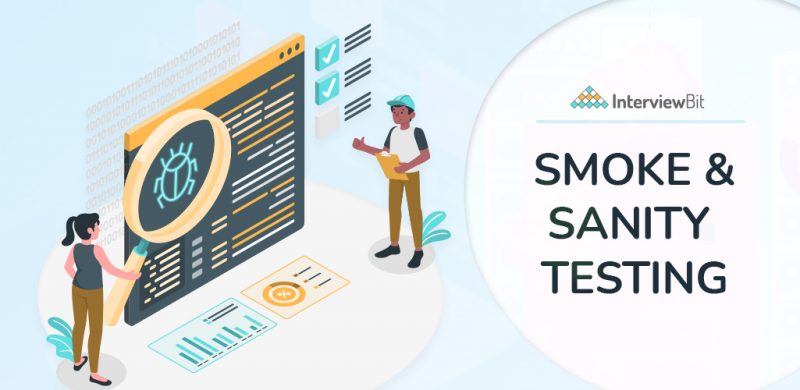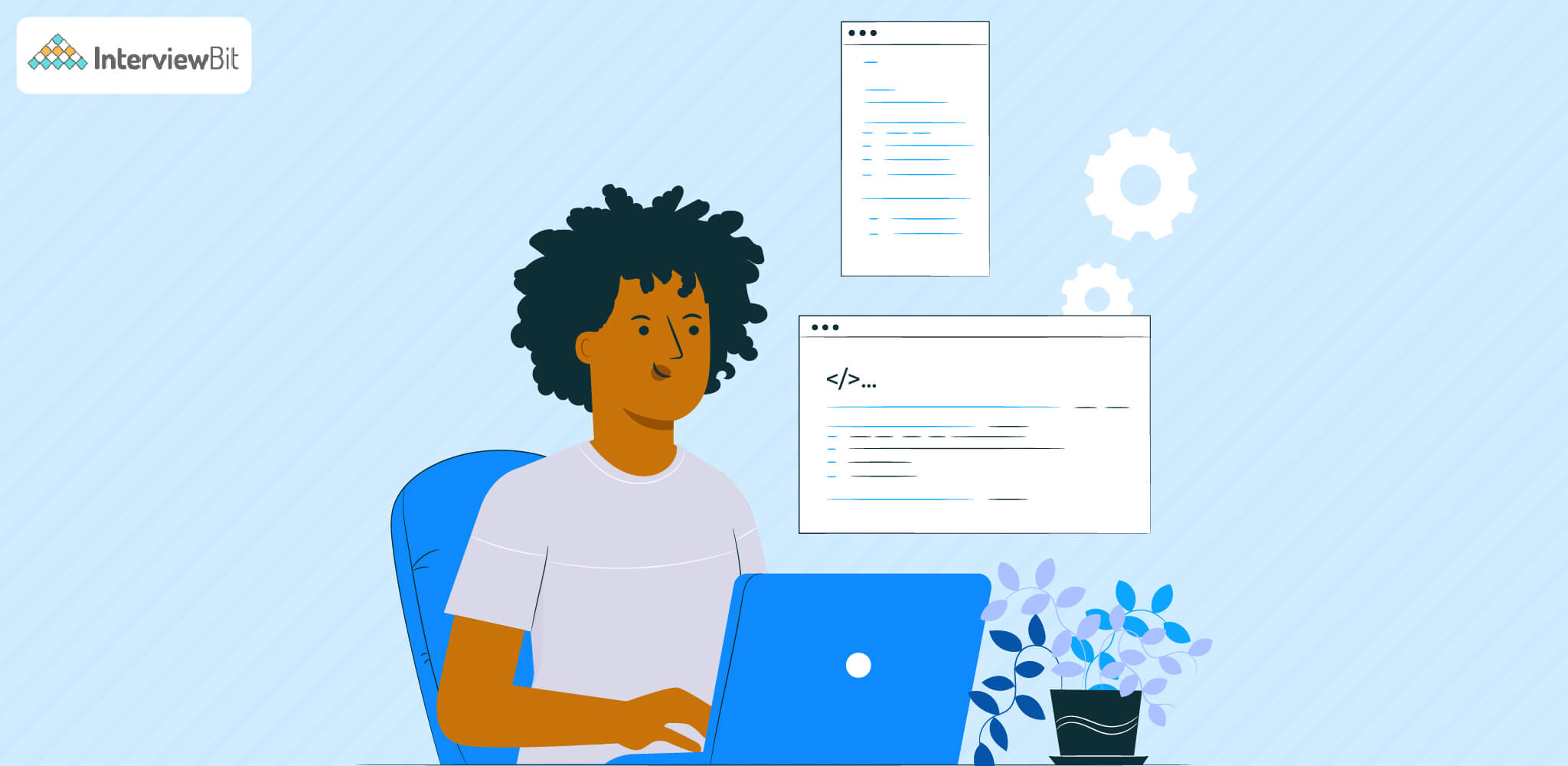- Introduction
- What is a Software Build?
- What is Smoke Testing?
- What is Sanity Testing?
- Key Features of Sanity testing and Smoke Testing
- Difference Between Smoke and Sanity Testing
- Conclusion
- Frequently Asked Questions
- Q.1: Which test comes first smoke or sanity?
- Q.2: What is the Test Life Cycle?
- Q.3: What are the different levels of testing?
- Q.4: When is Smoke Testing done?
- Q.5: Do we write test cases for sanity tests and smoke tests?
- Additional Resources
Introduction
In order to stay competitive and relevant, every company has been working tirelessly to develop software that delivers the greatest end-user experience. Regardless of the industry, the desire for better software must lower both the time and the cost of development. While there are numerous phases to creating great software, testing is still the most important step before it is released!
Testing guarantees that the software is both functional and trustworthy, as well as efficient. Smoke Testing and sanity testing are the two main types of testing throughout the development stage to verify those requirements are satisfied. Smoke and Sanity testing takes less time and checks the code’s basic functionality as well as eligibility for additional tests. Both smoke testing and sanity testing may be done manually or with the help of automated software. When automation tools are utilized, tests are launched frequently to generate the build. We can do smoke or sanity testing in a comparable software build, depending on the software’s requirements. In this case, we’ll start with the Smoke tests and then go on to the Sanity tests.
Knowing about smoke and sanity testing can aid you and your team in implementing the proper verification at the appropriate moment. While they are comparable, there are instances when one should be utilized over the other. We’ll also discover how they work together to provide a complete end-to-end examination of an application.
Confused about your next job?
What is a Software Build?
Can you think of the most important component in software development? We are, after all, discussing the code. However, we know that the complete software is not built by a single code. Depending on the software’s complexity, there may be thousands of source code files. These source codes must, of course, be compiled into a single executable file that can be shared with the release team and deployed. The build is the process of taking all of the required source code files and compiling them, then generating a build artefact, such as binaries or executable programs, for a software release. It is quite literal in this case since it is the process of developing software to implement it.
What is Smoke Testing?
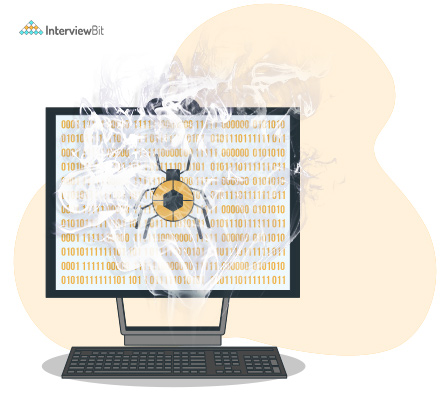
Smoke testing, often known as the build verification test, looks for problems in specific sections of the program rather than the entire application. It is used to test the acute functionality of the software. When the developers deliver a new build to the Quality Assurance teams, smoke testing is done. However, it is not limited to being carried out simply at the outset of a new project. Smoke testing will continue to operate even if new modules are added to current functionality. It is done by both testers and developers because it is simple and requires little time. It’s part of the thorough testing process, and it employs test cases to ensure that all critical components of the build are in working order.
It is a software testing technique used after a software build to ensure that the software’s essential features are operating properly. It is run before any functional or regression tests are run in detail. The basic goal of smoke testing is to reject a software program that has flaws so that the QA team doesn’t waste time evaluating defective software. Smoke testing is a subset of acceptance testing.
Smoke testing can save test effort while improving the application’s quality. Based on the client and the organization, smoke testing can be done manually or automatically.
“Build Verification Testing” or “Confidence Testing” are other terms for smoke testing.
A typical smoke test may include things like verifying that the application launches successfully, checking that the GUI is responsive, and so on.
When Should Smoke Testing Be Done?
When new software functions are built and integrated with an existing build in the QA/staging environment, smoke testing is performed. It verifies whether or not all key functions are operational. It also checks whether the build is stable or not.
The development team deploys the build in the QA in this testing technique. Subsets of test cases are identified, and then test cases are executed on the build by testers. The application’s essential features are tested by the QA team. The purpose of this set of test cases is to expose errors that are in the build. If all of these tests pass, the QA team moves on to Functional Testing.
Any failure implies that the system should be returned to the development team. We do Smoke Testing whenever there is a change in the build to guarantee stability.
Let’s take a look at a basic scenario in which you’re given an email application to evaluate. Logging into the email program, writing an email, and sending it are the most crucial features, right? Is it worthwhile to test additional features such as draft, deleted messages, archives, and so on if the email is not sent? This means you’ll have to drop the build without additional testing. This is referred to as smoke testing.
Benefits of Smoke Testing
- Increase the efficiency of the quality assurance staff.QA teams will be more productive and satisfied with their jobs if they have more trust in higher-viability builds that successfully pass the smoke test suite.
- The goal is to ensure the application’s “stability” before proceeding with additional testing.
- Helps in the detection of errors in the early stages.
- Minimizes integration risks.
- Less time spent debugging new and regression bugs. A regression bug is a bug that causes a previously functional feature to cease operating after a certain event (system upgrade, system patching, etc.) If any are discovered during smoke testing, the development team may begin troubleshooting and doing root cause analysis much sooner rather than waiting until the whole test suite has been completed.
Smoke testing is performed prior to the execution of automated test cases on a software build. Smoke testing is as good as confirming the successful installation of the build for the execution of the first test case if an organization has continuous testing built-in. If you haven’t already, try automating smoke tests since it will help you run the tests faster and get faster feedback so you can work on them right away.
What is Sanity Testing?
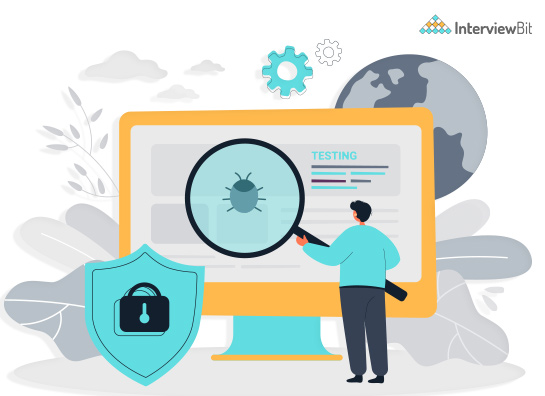
Sanity testing determines whether new module additions to an existing software build are stable enough to proceed to the next stage of testing. This is also known as Surface Level Testing, and it is required to quickly assess the quality of software regressions. Sanity tests reveal if end-to-end testing of the build can be carried out effortlessly in the case of small code changes. If the sanity test fails, the build is refused in order to save time and money on more thorough testing.
Sanity tests also guarantee that any modifications made do not affect the software build’s other capabilities. Sanity testing is a type of regression testing used in quality assurance. The main purpose of sanity testing is to make sure that the proposed modifications or functionality works as intended. If the sanity test fails, the testing team will reject the software product to save time and money. It is only carried out once the software product has passed the smoke test and been approved for further testing by the Quality Assurance team.
The goal is to confirm the application’s “rationality” before proceeding with additional testing. Sanity testing is a subset of regression testing as well. Because sanity testing is a subset of regression testing, it may also be automated.
Consider an e-commerce project with five modules: the home page, the login page, the new user creation page, the user detail page, etc. The username in the login page should not be fewer than seven characters, according to the criteria, and the issue occurs when a username with less than seven characters is approved.
The problem is subsequently reported to the development team, which is responsible for correcting it. The development team now fixes the problem and sends it back to the testing team to be double-checked. The testing teams next make sure that the problem corrected by the development team isn’t interfering with the operation of other modules.
When Should You Conduct Sanity Testing?
- Built is received after a number of regressions or if there is a minor change in the code.
- After bug fixes, the build is sent.
- Just before the production deployment.
Benefits of Sanity Testing
- Sanity testing aids in the rapid detection of problems in fundamental functionality.
- Because no documentation is necessary for sanity testing, it may be completed in less time.
- If problems are discovered during sanity testing, the project is rejected, which saves time for regression testing.
- The team’s focus is on validating the application’s functioning rather than thorough testing. Sanity testing is usually done on a build when a production deployment is required right away, such as for a critical bug patch.
Key Features of Sanity testing and Smoke Testing
- Smoke and Sanity testing save time for the QA team by swiftly determining whether or not an application is functioning properly. It also guarantees that the product is suitable for further evaluation.
- Sanity and Smoke testing are two methods to avoid wasting time and effort by evaluating whether an application is too defective to be tested thoroughly.
- Conducting a daily build and smoke test in software projects is one of the top industry practices.
- Smoke and sanity tests can be done manually or with the help of an automation tool.
- You may need to run both Sanity and Smoke Tests in the software build depending on the testing requirements. In such instances, you would do Smoke tests first, followed by Sanity Testing. Sanity testing test cases are frequently combined with smoke test cases in the industry to speed up test performance. As a result, the terms are frequently misunderstood and used interchangeably.
Difference Between Smoke and Sanity Testing
While there are some parallels between smoke and sanity testing, there are several important distinctions that distinguish both.
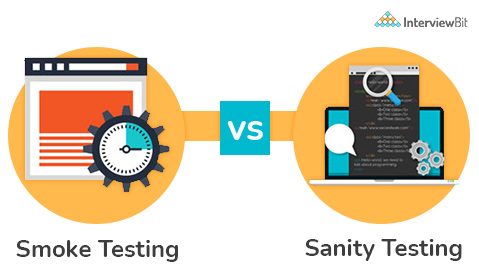
| Particulars | Smoke testing | Sanity testing |
|---|---|---|
| Purpose | Smoke testing is performed to ascertain that the acute functionalities of the program are operating properly. | Sanity testing is done to check that bugs have been fixed after the build. |
| Documentation | Smoke testing can be documented and scripted. | Sanity testing can’t be documented and is unscripted. |
| Basis of testing | The major goal of this testing is to ensure that the newly generated build is stable enough to withstand further rigorous testing. | The major goal of this testing is to determine the system’s rationality and correctness to ensure that the proposed functionality performs as intended. |
| Executed by | It is done by both developers and testers. | It is done by testers. |
| Subset | It is a subset of acceptance testing. | It is a subset of regression testing. |
| Performed on | Smoke Testing is first performed on the initial build. | Sanity Testing is performed on stable build or for the new features in the software |
| Coverage | Covers end-to-end basic functionalities of the system. | Covers specific modules, in which code changes have been made |
Conclusion
Finally, after learning about Smoke vs. Sanity testing, it’s time to close up our debate by summarizing the main points of this article. You can see why these two approaches are so different from one another and why they are the most useful components in software testing.
These are the fundamental testing ideas that most quality assurance and project teams in diverse software development projects adhere to. For successful and acceptable Quality Assurance outcomes, a beginner in testing should understand the principles of Smoke and Sanity testing. Sanity and smoke testing are two methods for saving time and energy by rapidly determining whether an application is too damaged to pass any thorough testing.
Frequently Asked Questions
Q.1: Which test comes first smoke or sanity?
Ans: Smoke tests are performed first followed by sanity tests. During the early phases of the software development life cycle(SDLC), smoke testing is performed. While sanity testing is performed during the final phases of SDLC.
The QA team may have to run Sanity, Smoke, and Regression tests on their software build depending on the testing requirements and time constraints. In such instances, smoke tests are performed first, followed by sanity testing, and then regression testing is scheduled based on the time available. Smoke testing takes place as soon as the build is installed, whereas sanity testing takes place once the problem fixes are completed.
Q.2: What is the Test Life Cycle?
Ans: The Software Testing Life Cycle (STLC) is a series of steps taken during the testing process to guarantee that software quality objectives are satisfied. Both verification and validation are part of the STLC. It is made up of a set of methodical actions that will assist you in certifying your software product.
Every Software Testing Life Cycle Model (STLC Model) has the following six key phases:
- Requirement Analysis
- Test Planning
- Test case development
- Test Environment setup
- Test Execution
- Test Cycle closure
Q.3: What are the different levels of testing?
Ans: In software testing, there are four levels of testing:
- Unit testing: determines whether individual software components perform as expected.
- Integration testing: examines the flow of data from one module to another.
- System testing: assesses both functional and non-functional testing requirements.
- Acceptance Testing: verifies that a specification or contract’s criteria are satisfied in accordance with its delivery.
Q.4: When is Smoke Testing done?
Ans: Smoke testing is a software testing technique used after a software build to ensure that the software’s essential features are operating properly. Smoke testing is performed after developers add new features to existing functionality or when a new or significantly modified software build is released. The basic goal of smoke testing is to reject a software program that has flaws so that the QA team doesn’t waste time evaluating defective software.
Q.5: Do we write test cases for sanity tests and smoke tests?
Ans: Both smoke testing and sanity testing can be carried out either manually or automatically. You don’t need to develop new test cases to run smoke tests; instead, you can just choose the appropriate test cases that have already been specified by programmers. The main goal here is to test the application’s basic process. Simply choose the test scenarios that define your software’s primary functions.
Additional Resources
- Software Testing MCQ
- Software Testing Interview Questions
- Principles of Software Testing
- Testing Tools
- Manual Testing Tools
- Automation Testing Tools
- API Testing Tools
- Performance Testing Tools
- Automation Testing Interview Questions
- Selenium Interview Questions
- Difference Between Testing and Debugging
- How To Become A QA Engineer?
- Test Plan vs Test Strategy
- Difference Between Alpha and Beta Testing







 Join WhatsApp Group
Join WhatsApp Group
